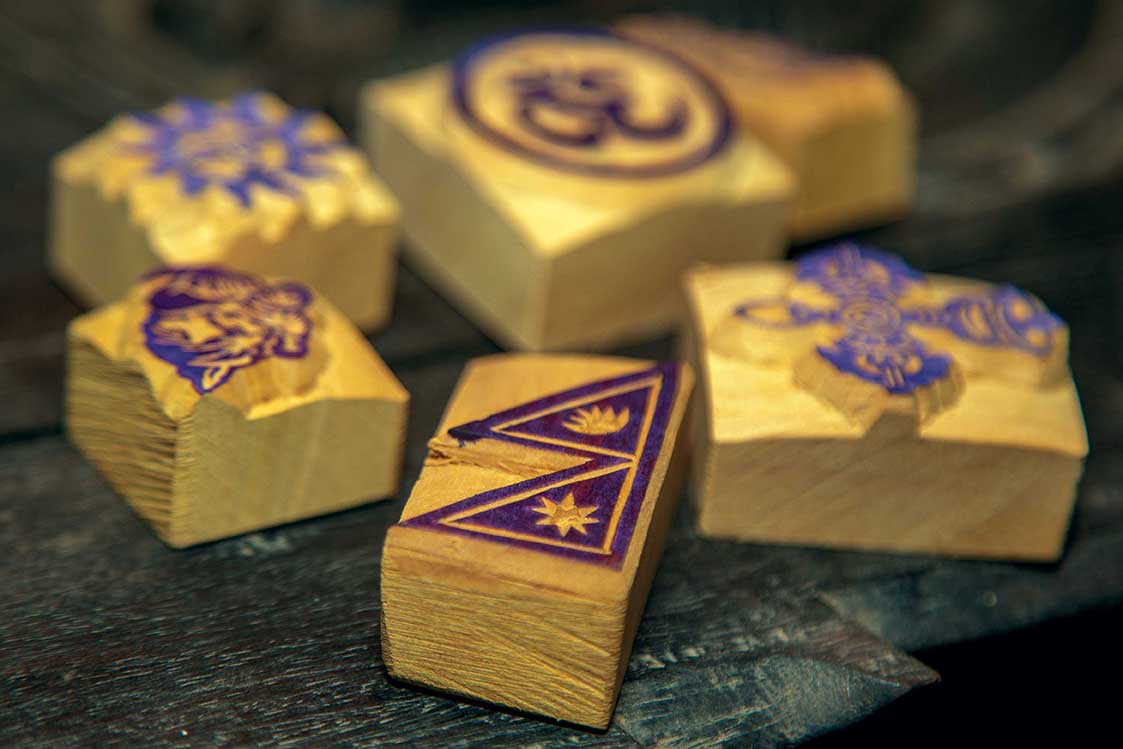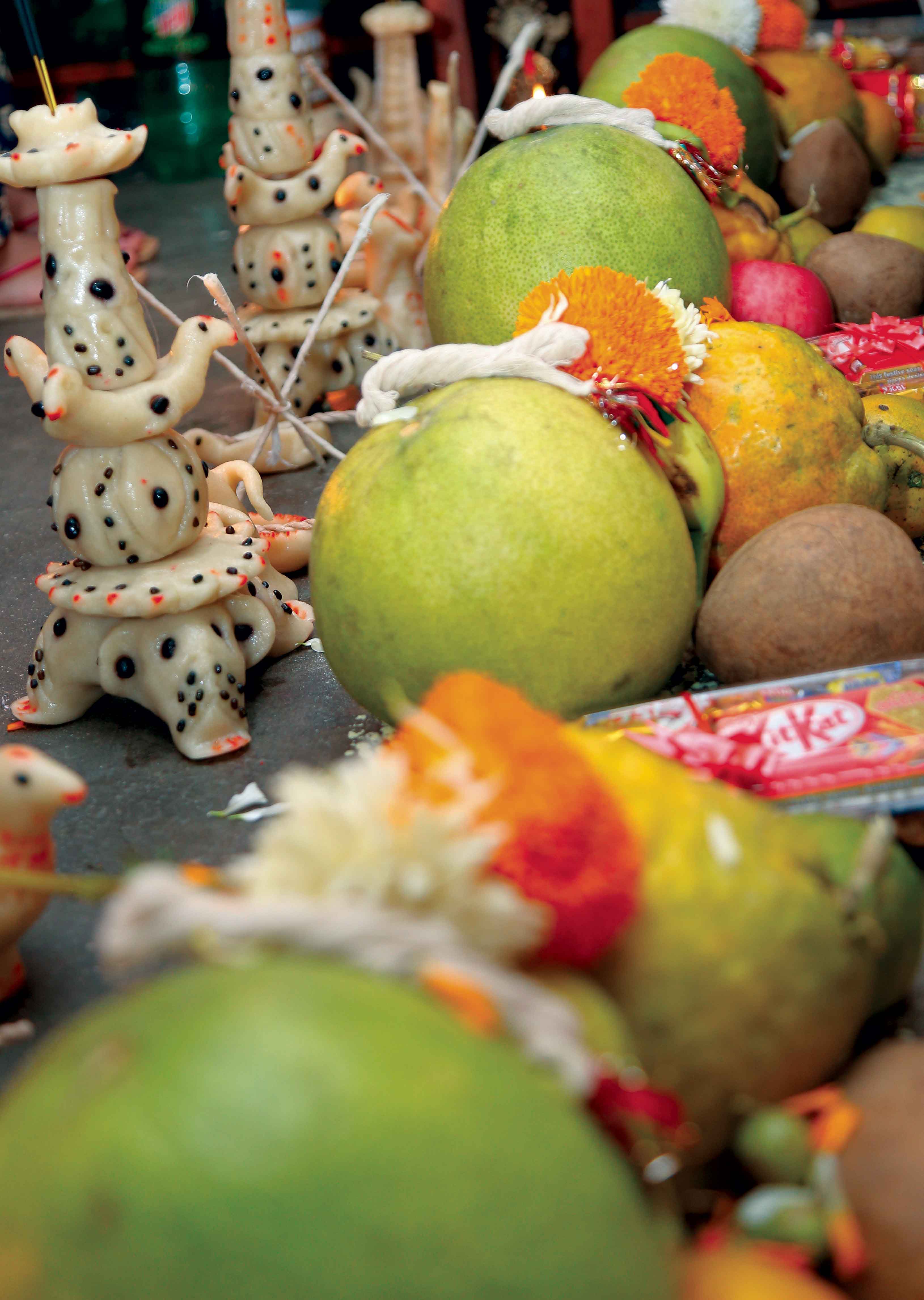It was during my days of walking the streets and selling prints I met a very interesting Thanka Painting Tulku who spoke English with the speed of light and use to frequent “Print Simon’s” shop..
Back in 1970, while trekking in the Khumbu region, an American named Simon White picked up a few woodblock prints at Tengboche Monastery and brought them back to Kathmandu. He went on to commission Newari carvers to reproduce blocks for these prints, and this subsequently gave birth to a frenzy of friendly competition in this area of craft between several foreign residents of the valley. A certain Ian Alsop, son of the late Stewart Alsop, also arrived in Kathmandu around that time and he and Simon White together established a printing business in town. This was approximately how the block printing business, began in Kathmandu.
Ian learned that the Tibetan woodblock carvers of ‘Derge Parkhang’, the famous printing house of Kham in eastern Tibet, and their painter master, Khamtrul Rinpoche, Don-gyu Nyima, were living in a resettlement camp in northern India. He found them in Tashi Jong and so commissioned blocks to be drawn by the Rinpoche, and cut by his apprentices. Returning to Kathmandu, he started printing these blocks with “Print Simon” but the partnership between Simon and Ian did not last and eventually Ian broke off to established his own printing business and became “Print Ian” (to distinguish him from any other Ian who might show up to town…).
Meanwhile, another duo, “English Jerry and Barry”, commissioned wood blocks by Newar carvers and a few years later “Tasmanian Francis” Brooks arrived on the scene and chose to render Chinese paintings into woodblock prints. Now there were four woodblock printing establishments in the Kathmandu Valley and all of them would get travelers, earning their way through, to walk the streets selling block prints to other tourists for a 10% commission.
I returned to Nepal in 1971, after a year of the usual ‘searching for the meaning of life’ in India, and joined my colleagues hawking prints in downtown restaurants. There were about nine people selling at any one time and often we would find ourselves at the same teashop. The lively hippie, traveler and local gathering places of those days were the Cabin, Camp Hotel, Tibetan Brothers, Vishnu’s Pie ‘n Chai in Pig Alley, The Tea House, and later, Aunt Jane’s and Helen’s, the Bahai restaurant off New Road. It was tough dealing with the hashish-smoking, tea-spilling tourists who could easily burn and stain more prints than I could sell in a day!
After a year of pounding the pavement, in 1972 I decided to entice tourists to come to me and opened the “Print Shop and Art Gallery” at Joche Tole. I thenceforth became “Printshop James”. Initially I sold everyone’s prints, but seeing a higher quality of drawing and carving in Ian’s prints, I chose to carry only his collection, which grew to over a hundred blocks. The historically famous nine block prints depicting the 12 deeds of the Buddha, drawn by Khamtrul Rinpoche, were also commissioned then, and five are still in existence today.
It was during my days of walking the streets and selling prints I met a very interesting Thanka Painting Tulku who spoke English with the speed of light and use to frequent “Print Simon’s” shop, then run by “Gay Peter”. He would tell me the oral tradition of each print and its symbolism in the Tibetan Buddhist Pantheon.
As life unfolds in this magical valley of Kathmandu, thirty years later, Matthew Akester who was compiling a book, The Twelve Deeds of the Buddha, with illustrations of a Tulku’s painting of the twelve deeds of the Buddha wanted to introduce me to the painter who created them. The Tulku turned out to be my “Thangka Painting” Tulku friend of 1972!
Thus, we saw an opportunity to unite recent history with the present day, and so the exhibition and book launch at the Indigo Gallery. In this exhibition there will be original productions from the wood blocks of the Derge carvers, based on Kamtrul Rinpoche’s drawings that were sold in the Print Shop & Art Gallery in Joche Tole. They had been in storage for twenty-nine years until I brought them back last year. I am pleased to present them because these prints are no longer seen in Kathmandu. They warrant another renaissance and will illustrate the books xylographs and if the original woodblocks have not survived the dry summer heat of Santa Fe for the past 15 years or so, perhaps we are seeing here the last of what was once a thriving business of a bygone era.
The exhibition began on 29th March and continues to the 15th of April. Timings are from 7am to 9pm. Call Indigo Gallery at 4413580 for further enquiries.











